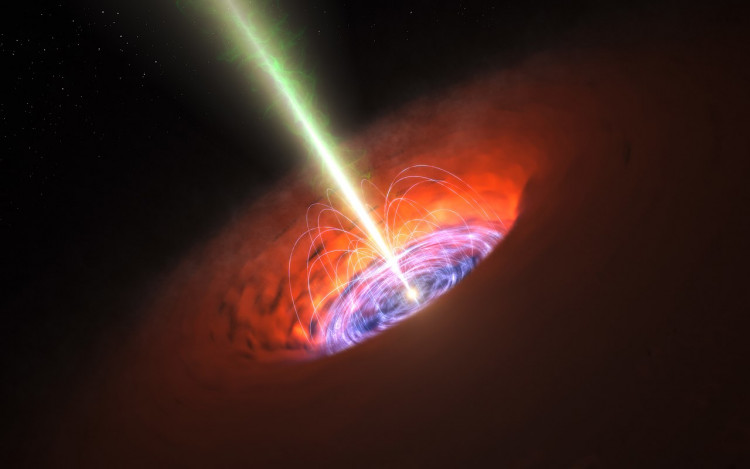These celestial mysteries have thrilled and baffled scientists since Albert Einstein first predicted their existence more than a century ago. Today, experts know that they are space-time entities where nothing, not even light, can escape. They form as large stars die at the end of their life cycles, and they will begin to expand by consuming the matter surrounding them.
This process helps scientists to recognize their existence since electromagnetic radiation is transmitted from space as visible light. Yet History's "10 Ways the World Will End" showed how they could one day pose a threat to life on Earth.
Greg Laughlin, an astrophysicist at the University of California, painted a dim view of life on Earth if a black hole comes to life in our galaxy. A black hole is capable of resuscitating itself while it's in the proximity of matter, so every black hole has the potential to unexpectedly come to life as a truly brutal murderer.
Laughlin explained that no one on Earth is safe or protected until the event horizon of a supermassive black hole has been breached. Yet life will continue on for a time. When our planet reaches the singularity, the gravity of the black hole is heavier on one side of the Earth than on the other. Because of this disparity, there is a stretching and pressing effect that is applied to the Planet.
In this imaginary case, the series broke down what could happen to Earth if the black hole was too close. When Earth eventually passes beyond the event horizon, it's majestic; instead of a big bang, there's light.
American theoretical physicist Michio Kaku explained how astronomers found "rogue" black holes in the Milky Way.
"We used to think that black holes were stationary, but we were shocked to find that there are rogue black holes that wander across the galaxy," Kaku said. "If you get so close to a back hole that you are in the grip of its gravitational field, then no matter what you do, you are doomed to fall into the black hole."
This interstellar light display may be impressive, but it also suggests that our planet has reached a black hole and that we are being drawn closer to the doomsday point at its core, known as the singularity. With Earth close to the singularity, buildings, the bridges, and the surface of the Earth itself violently buckle. The gravity of the black hole is so strong now that it will stretch, twist, or break our world like a sheet of paper.
After traveling through the Milky Way, where our Solar System once existed, there will be no cosmic dust left.




